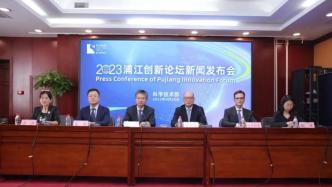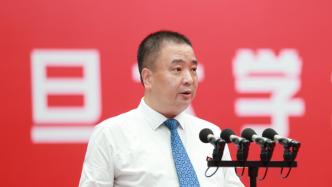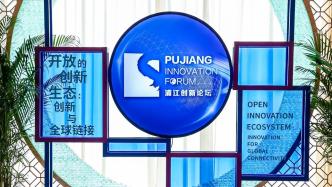
On the morning of September 10, the 2023 Pujiang Innovation Forum (16th) held its opening ceremony and plenary meeting at the Dongjiao Hotel in Pudong New Area, Shanghai.
During the exchange, "technological innovation and cooperation" was constantly mentioned. "Open Innovation Ecosystem: Innovation and Global Links" is the theme of this forum.
“Global Collaboration benefits innovations.” Kumsal Bayazit, CEO of international publisher and scientific information company Elsevier, said in the plenary meeting report on the morning of the 10th.
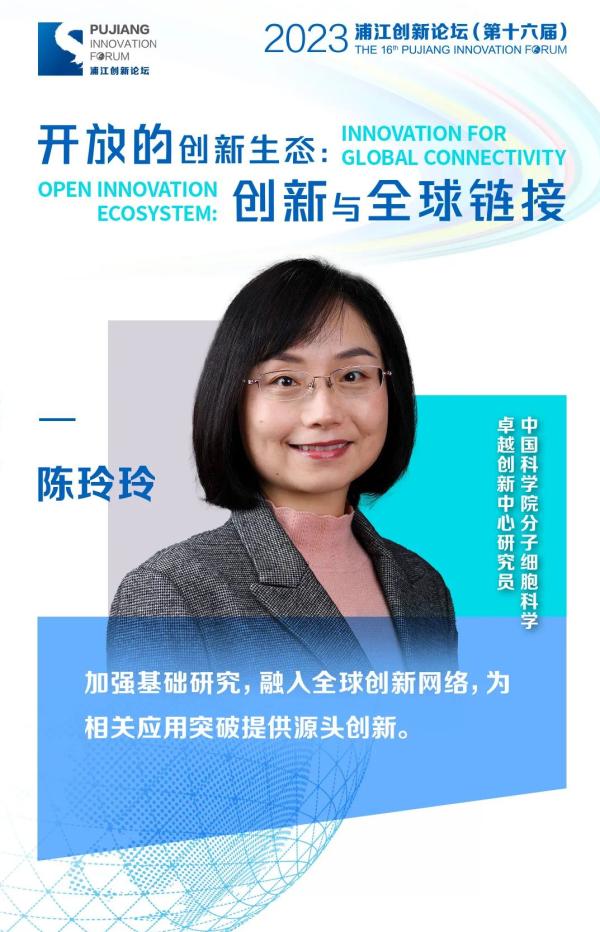
Chen Lingling, a researcher at the Center of Excellence for Molecular Cell Science of the Chinese Academy of Sciences, said that basic research should be strengthened and integrated into the global innovation network to provide source innovation for relevant application breakthroughs.
Pietro Barabaski, Director General of the International Thermonuclear Experimental Reactor Program (ITER), Jin Li, President of Fudan University and Academician of the Chinese Academy of Sciences, Xu Donglian, Li Zhengdao Scholar and Associate Professor of the Li Zhengdao Institute of Shanghai Jiao Tong University, etc. respectively spoke about their leadership Or the story of the big science project launched, "solving" the way to connect innovation and globalization at the Pujiang Innovation Forum.
Normally, people undergo a physical examination with up to dozens of tests, but in the International Human Phenotype Project initiated by Jin Li and others, volunteers had to test 24,000 phenotypes over two days and one night. At present, scientists from 20 countries have joined the research of this international scientific project.
In the special dialogue on "Global Science and Technology Innovation Cooperation", Jin Li called for the establishment of a global science and technology innovation network to promote the sharing and exchange of science and technology resources; to strengthen the global science and technology system and formulate fair and reasonable international rules and standards.
The largest international scientific cooperation project in which China participates: Simulating a Sun
Pietro Barabaschi, Director General of the International Thermonuclear Experimental Reactor Program (ITER), said that the countries participating in ITER cooperation account for half of the world's population, "and 80% of the overall industrial capacity." .
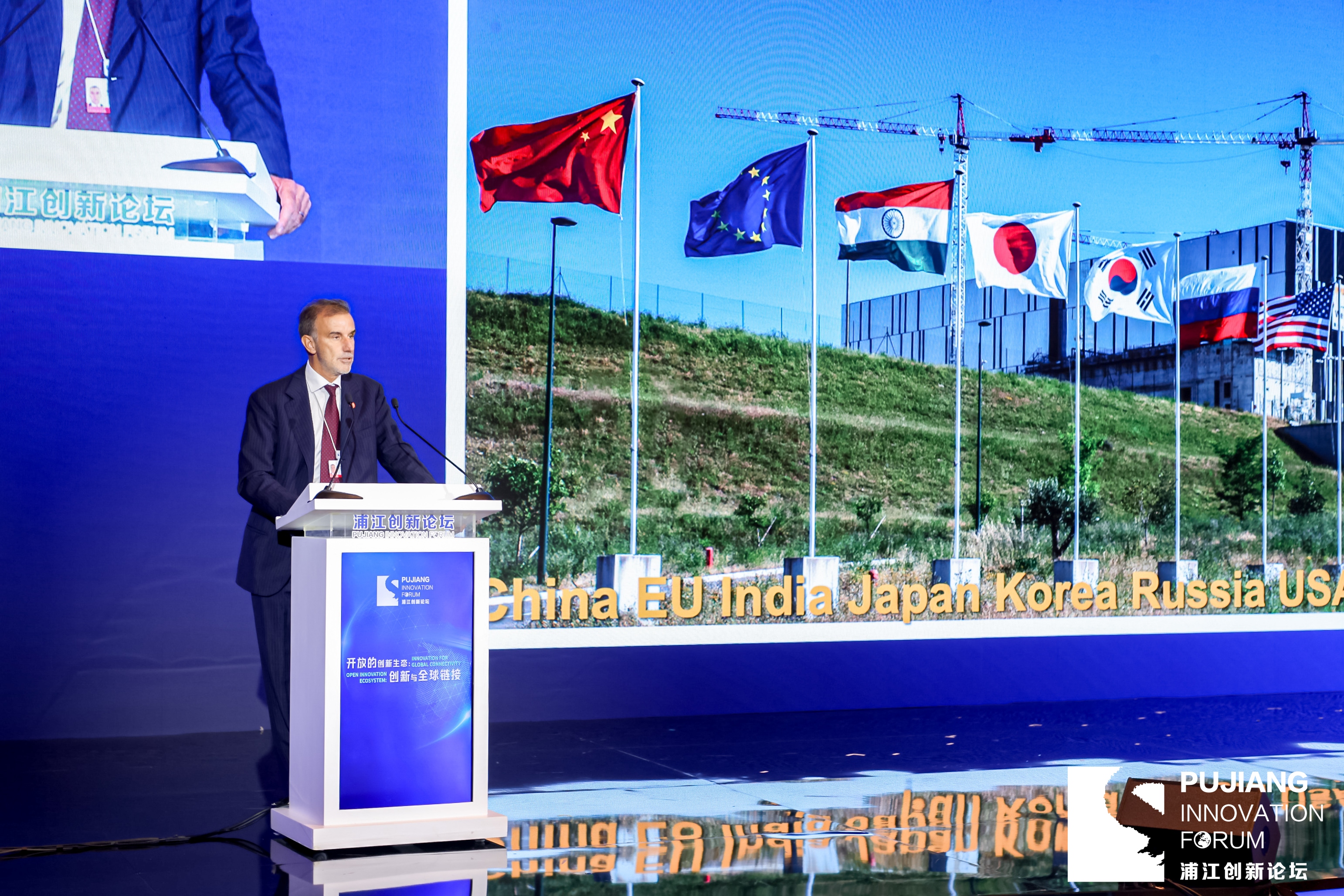
Seven parties including the EU, China, the United States, Japan, South Korea, India and Russia jointly fund the ITER project, of which the EU contributes approximately 45% and the other six parties each bear approximately 9%. The ultimate goal is to achieve commercial application of nuclear fusion energy around 2050. .
About 100 years ago, scientists have known that nuclear fusion is the process that provides energy to the sun and all stars. But how do you simulate what happens on the Sun—nuclear fusion—on Earth?
In 1985, the idea of the ITER project was proposed: for the common goal of peace, it is hoped that through joint efforts over the next few decades, nuclear fusion can be developed as an energy source. First it was the United States and the Soviet Union, then Japan and Europe joined, and then China, South Korea, and India.
According to Xinhua News Agency, ITER is one of the largest and most far-reaching international scientific research cooperation projects in the world. It aims to simulate the nuclear fusion process of sunlight and heat, and explore the commercial feasibility of nuclear fusion technology. Seven parties including the EU, China, the United States, Japan, South Korea, India and Russia jointly fund this project, of which the EU contributes about 45% and the other six parties each bear about 9%. The ultimate goal is to achieve commercialization of nuclear fusion energy around 2050. application.
Pietro Barabaski said nuclear fusion requires incredible scientific and engineering innovation. A method called magnetic confinement fusion was chosen, with a very large donut-like vessel called a tokamak. "We put some gas in it and then use electric current to convert the gas into an ionized plasma, heating the plasma to 150 million degrees Celsius. This is 10 times hotter than the core temperature of the sun." Thermonuclear fusion experimental reactors require a lot of First-of-its-kind components, from heating systems to diagnostic systems, as well as many specialized materials require innovation.
Pietro Barabaski said that China is an important partner in the thermonuclear fusion experimental reactor project. In addition to magnets, China also contributed many other electrical components and system structural components, such as gas injection systems, diagnostic systems, etc. This requires important innovations by Chinese universities, companies and other R&D institutions.
In addition, any component of the thermonuclear fusion experimental reactor has high requirements for accuracy, so the installation quality is also crucial. Pietro Barabaski said that China Nuclear Power Engineering Co., Ltd. led thousands of installation work, allowing the experimental reactor to be finally fully assembled. "This is a huge contribution made by China."
Source and initiative of Shanghai Innovation: International Distributed Big Science Plan with 24,000 physical examinations per person
"A deeper understanding of the nature of the disease will help with diagnosis and treatment." Jin Li said that the ultimate goal of the Human Phenotype Project in Shanghai, which is the source of innovation , is to analyze diseases through a large number of phenotypic analyses; Build a navigation map for future biomedical research so that future researchers do not need to grope in the dark.
Previously, people hoped to correlate phenotypes and genes through genome sequencing and study. But then it encountered a bottleneck. Jin Li said that the first major scientific project in the field of life sciences in human history was the Human Genome Project. It was quite large in scale. It took a full 10 years and involved scientists from dozens of countries. It was finally officially announced in 2001. All human genes have been sequenced, and then the correlation has entered a golden period. "But the relationship between phenotype and genes has now entered a bottleneck." Because the relationship between genes and phenotypes is not a one-to-one correspondence. Genes on one end and phenotypes on the other, how are they related? There are too many things to "cross". The mechanism of inheritance itself is quite complex, and the phenotype itself is also complex.
Genomic research is called a back-door strategy, while phenotypic analysis is called a front-door strategy by Jin Li. "By the way, bring the genes in and launch a full-scale attack, going through the front door and the back door together," he said.

The relationship between genes and phenotypes is not a one-to-one correspondence. How are they related? There are too many things to "cross".
Through the analysis of large sample sizes, they correlated macroscopic phenotypes and microscopic phenotypes, and then determined what relationships existed between them.
Jin Li said that people usually do dozens or hundreds of items for physical examination. In the human phenotypic study, volunteers spent two days and one night to complete the measurement of 24,000 phenotypes. The entire recruitment process "We completed the measurement of 1,000 individuals and 24,000 phenotypes per person as required."
In terms of research results, Jin Li said that if there is a relationship between 24,000 phenotypes, then there are about 500 to 600 million possible associations. In fact, more than 1 million strong associations have been found in the research, and there are New findings were obtained using Phenogroup Navigation Map 1.0. For example, the genetic problem behind fingerprints has not been solved for decades. Researchers have discovered the gene that determines human fingerprints. "And what surprised us is that this gene is not actually related to skin, but to the development of the limbs, which subverts our previous understanding."
"We found a set of 5 metabolites that can predict Alzheimer's disease 5 years in advance and make early diagnosis; by analyzing the methylation characteristics of CpG sites in DNA, we can predict 5 common diseases 4 years in advance. Early diagnosis of digestive tract tumors; based on the 1.5 million strong correlations previously discovered, we have raised a series of new questions that we should answer." Jin Li said.
The idea for the International Human Phenotype Project was first proposed in 2015. Jin Li said, "In 2016, the first International Human Phenotype Conference was held, and the core tasks and routes were proposed. In 2018, it was officially launched and an international cooperation group was established." " The first was major special support at the Shanghai municipal level . We It has laid a foundation, and the medium- and long-term goals will make it become an international large-scale scientific project." "Currently, there are 20 countries in the international human phenotypic research collaboration group."
Jin Li said, " The big science plan is just like we want to build a community with a shared future for mankind. We need to have a scientific community. This is the need for human survival and development. "
Listen quietly to the great scientific device of the world
"Only neutrinos can travel across the entire earth, and no other particles can do so." On the morning of September 10, in the report of the first Youth Special Lecture held by the Pujiang Innovation Forum, Li Zhengdao Scholar and Associate Professor of the Li Zhengdao Institute of Shanghai Jiao Tong University Xu Donglian said, "Neuttrinos are very mysterious ghost messengers of the universe. They are also a powerful tool for studying the extreme universe. They are the perfect bridge connecting the largest and smallest in the universe. We are building high-performance neutrino telescopes to capture these The magical messenger from the depths of the universe can realize the subtle things and listen to the world!"
Neutrino is a kind of basic particle that makes up nature. It is very magical, has no charge, has extremely small mass, and only participates in weak interactions and gravitational effects. There are three types of it, and they can change from one to another during flight.
Xu Donglian introduced that neutrinos are a unique probe for studying the extreme universe, or an indirect means of searching for dark matter. Xu Donglian said that dark matter particles may annihilate or decay into neutrinos, so neutrino telescopes can be used to track traces of dark matter.

"There are many sources of neutrinos in the universe, all related to extreme physical processes. For example, the relic neutrinos from the Big Bang are now filling every inch of the universe. The solar nuclear fusion produces massive amounts of neutrinos. Neutrinos, in fact, our entire earth and all life forms on the earth are 'immersed' in the ocean of neutrinos produced by the sun. Tens of billions of solar neutrinos pass through our fingernails every second. At the highest energy end - —Black holes from the depths of the universe are also predicted to produce ultra-high-energy neutrinos. But the flux of neutrinos from black holes reaching the earth is very, very low. It takes about 100 times the age of the universe to wait until a black hole Neutrinos travel through our bodies.”
Xu Donglian said that the development and completion of large-scale scientific equipment for neutrino telescopes is a long process, usually on the order of 10 years. After completion, a massive amount of scientific data can be generated, which requires the establishment of a cooperation group with international scientists. to handle.
She participated in the international cooperative experiment of the Antarctic "IceCube" (IceCube). In 2018, she returned to China to join the Tsung-Dao Lee Institute, launched the South China Sea neutrino telescope project - the "Sea Bell Project", and led the team to select sites in the South China Sea in 2021.
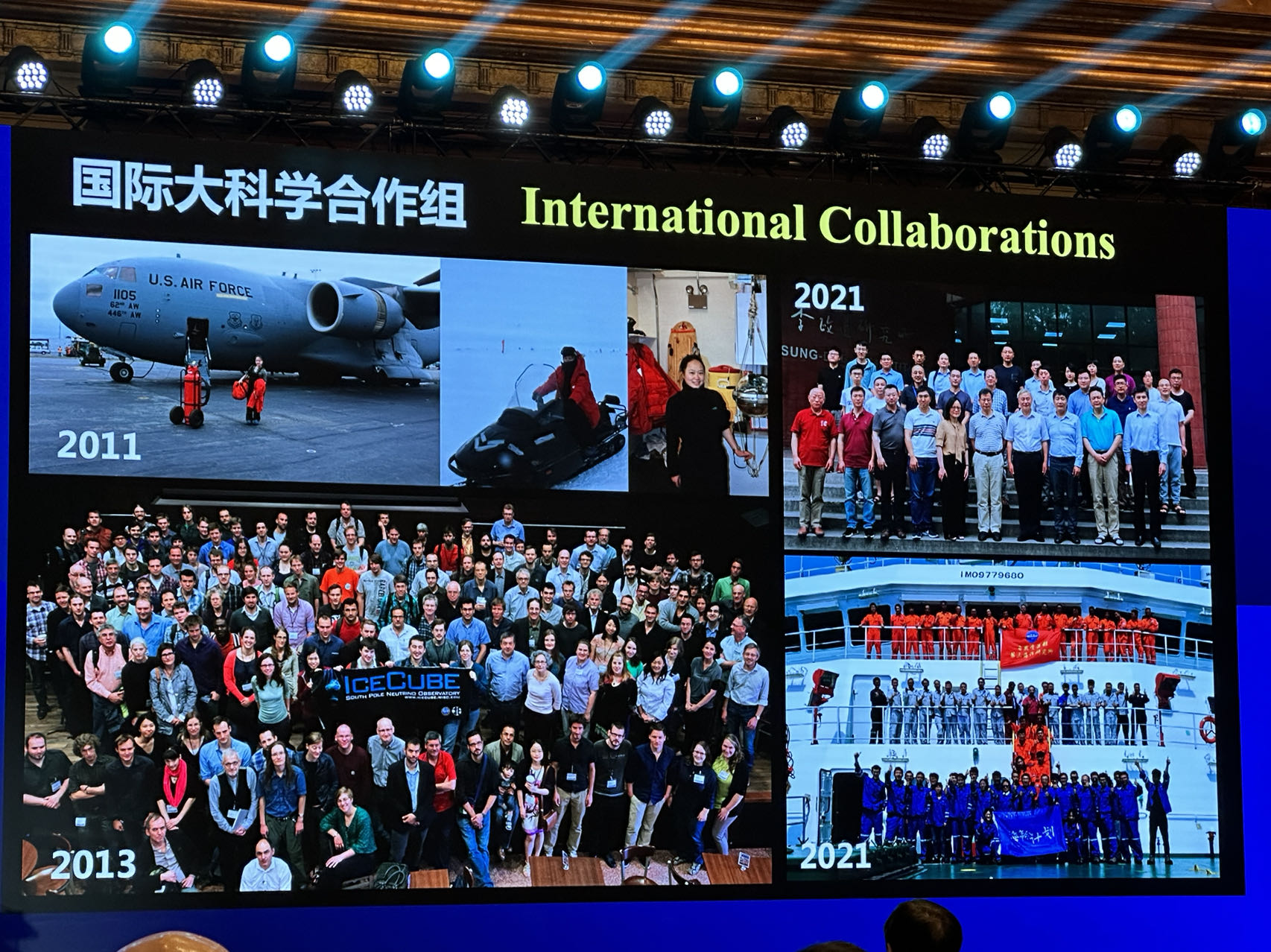
Xu Donglian has participated in international large scientific cooperation groups.
The detector array of IceCube, the world's largest neutrino telescope, is built in the Antarctic ice at a depth of 2,500 meters.
According to Xinhuanet, "Ice Cube" is located in the underground ice of Antarctica. Its main body is pure ice with a volume of 1 cubic kilometer and thousands of optical sensors. A large number of neutrinos pass through the Earth every moment, and a very small number of them collide with atomic nuclei in the ice, producing special flickers that can be picked up by optical sensors.
According to previous reports by The Paper, the "Sea Bell" monitors more than 1 million Beijing "Water Cubes" on the 3,000-meter-deep South China Sea. Its project goal is to build a submarine that will work continuously for 20-30 years, all day and all the time. Neutrino telescope array.
